Kyoto’s rich cultural heritage comes alive in the captivating Tea Ceremony and Gion Wabi-sabi Walking Tour. Participants will enjoy the intricate motions of the tea ritual, preparing the iconic powdered green tea. Wandering through Gion’s atmospheric alleyways, they’ll discover the principles of wabi-sabi – the beauty in imperfection. Exploring iconic temples like Kiyomizudera, this journey offers a unique insight into Kyoto’s spiritual essence. With an English-speaking guide, visitors can delve deeper into this enchanting experience.
Key Points
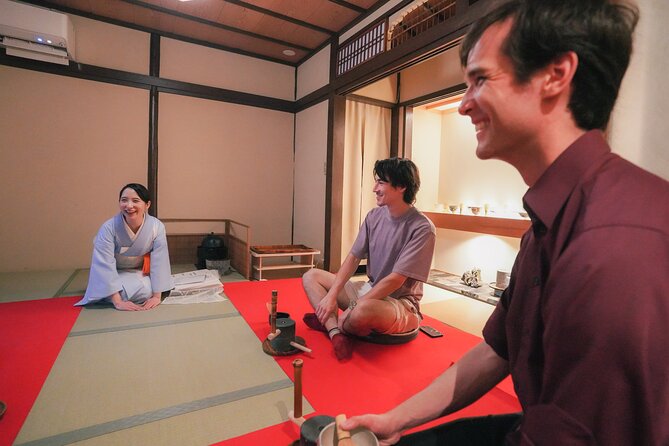
- Immersive experience in Japan’s cultural traditions, including the significance of the tea ceremony and the wabi-sabi aesthetic in Gion.
- Exploration of well-preserved machiya townhouses, hidden temples, and shrines in Gion, highlighting the influence of wabi-sabi.
- Visit to Kyoto’s historic temples, such as Kennin-ji, Kiyomizudera, and Kodai-ji, providing insight into the city’s cultural heritage.
- Guided tour led by a provider with a 5.0 rating, accommodating up to 7 travelers at a cost of $77.67 per person.
- Logistical details, including the meeting point, start time, and cancellation policy, as well as accessibility considerations.
Overview of the Tour
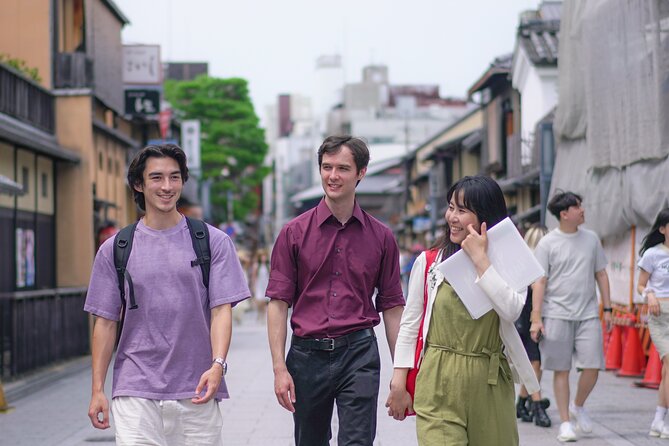
This overview covers the key details of the Kyoto Tea Ceremony and Gion Wabi-sabi Walking Tour.
The tour takes place in Kyoto, Japan and is provided by MagicalTrip Inc. With a perfect 5.0 rating from 6 reviews, the tour costs $77.67 per person and accommodates up to 7 travelers.
Inclusions are a tea ceremony experience, entrance fees for 2 temples, an English-speaking guide, and photos.
The meeting point is Gion-Shijō Station, and the tour ends at Kiyomizu Temple. It starts at 1:30 PM, requires confirmation, and offers free cancellation 24 hours in advance.
If you're enjoying exploring Kyoto on foot, you'll love these other walking tours we recommend
Highlights of the Tea Ceremony Experience
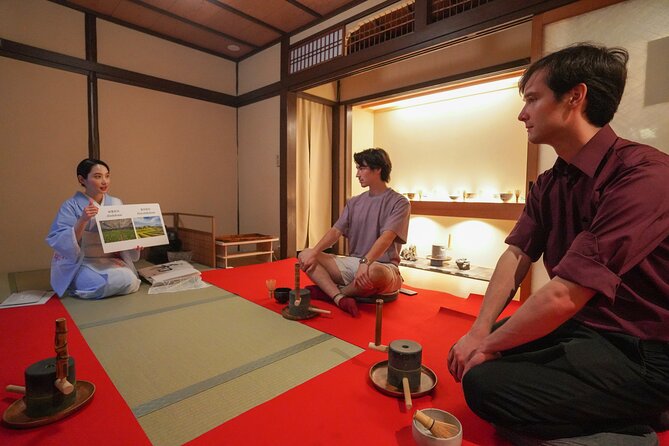
The tea ceremony experience offers visitors a rare glimpse into Japan’s centuries-old cultural traditions.
Participants will be immersed in the meticulous choreography of this revered ritual, learning about the significance of each precise motion and detail. From preparing the powdered green tea to the graceful presentation of sweets, every element of the ceremony embodies the principles of wabi-sabi – finding beauty in imperfection.
Guests will savor the exquisite flavors and aromas while gaining insight into the profound spirituality that underpins this iconic Japanese art form.
It’s a captivating window into the country’s refined aesthetics and contemplative mindset.
Exploring the Wabi-sabi Aesthetic in Gion
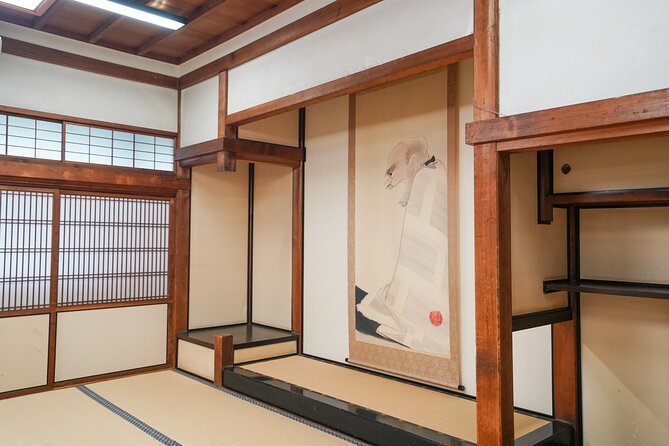
Following the captivating tea ceremony experience, the walking tour through Gion offers visitors a chance to enjoy the wabi-sabi aesthetic that permeates this historic district of Kyoto.
Wabi-sabi, the Japanese concept that celebrates imperfection and the transience of all things, is embodied in Gion’s weathered buildings, cobblestone streets, and beautiful landscapes.
-
The tour guides travelers through Gion’s narrow, atmospheric alleyways, showcasing the district’s well-preserved machiya townhouses and their distinctive architectural features.
-
Visitors learn about the importance of wabi-sabi in Japanese culture and how it influences the design, art, and traditional crafts found throughout Gion.
-
Exploring hidden temples and shrines, travelers gain a deeper appreciation for the serene, subdued beauty of wabi-sabi.
-
The walking experience culminates at the iconic Kiyomizudera Temple, where the concept of wabi-sabi is beautifully expressed in the temple’s wooden construction and stunning natural setting.
Visiting the Temples and Shrines
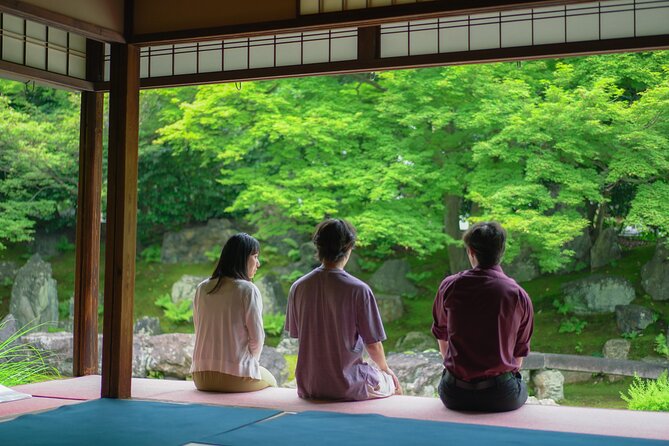
As visitors stroll through the historic Gion district, they have the opportunity to visit several renowned temples and shrines that showcase the intricate details and profound significance of Japan’s religious and cultural heritage. During the tour, guests explore the serene Kennin-ji Temple, a Zen Buddhist temple founded in 1202, and the iconic Kiyomizudera Temple, a UNESCO World Heritage site known for its wooden terrace offering stunning views of Kyoto. The tour also includes visits to the Kodai-ji Temple and the Yasaka Shrine, allowing travelers to enjoy the beauty and spirituality of Kyoto’s timeless landmarks.
| Temple/Shrine | Significance |
|---|---|
| Kennin-ji | Oldest Zen temple in Kyoto, founded in 1202 |
| Kiyomizudera | Famous for its wooden terrace, UNESCO World Heritage site |
| Kodai-ji | Features exquisite gardens and Zen-inspired architecture |
| Yasaka Shrine | Historic Shinto shrine, known for its annual Gion Festival |
Meeting the English-speaking Guide
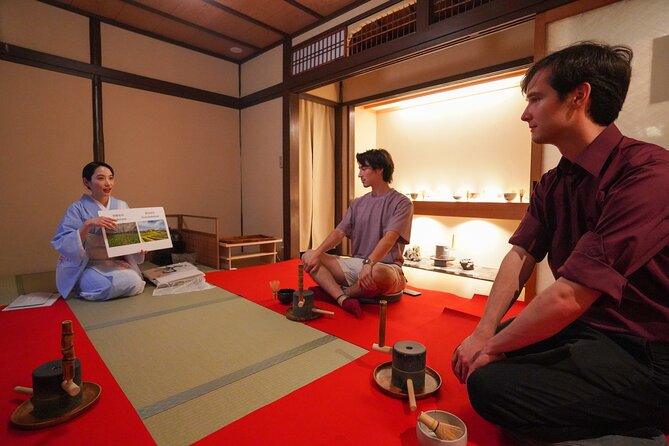
Travelers gather at the designated meeting point, the Gion-Shijō Station, where they’re greeted by the knowledgeable English-speaking guide.
The guide introduces themselves and provides an overview of the day’s activities:
- Highlights the key points of interest along the walking tour route
- Explains the significance and etiquette of the upcoming tea ceremony experience
- Offers insights into the history and cultural significance of Gion and its Wabi-sabi architecture
- Encourages participants to ask questions and engage throughout the tour
With a friendly demeanor and deep expertise, the guide sets the stage for an immersive cultural journey through Kyoto.
Logistical Details and Considerations
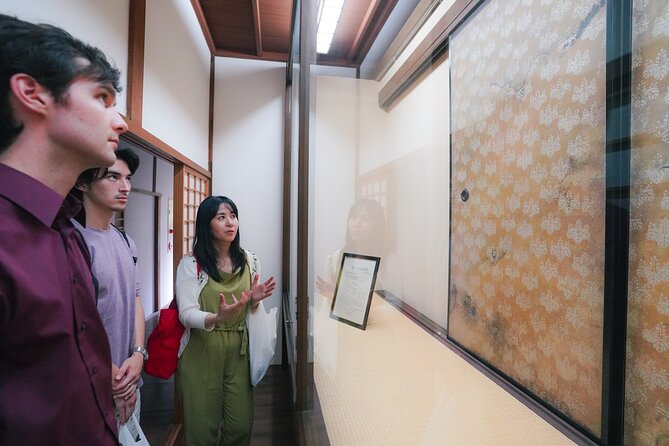
After meeting the guide, participants are provided with logistical details and considerations to ensure a smooth and enjoyable experience.
The tour starts promptly at 1:30 PM, so punctuality is required – late arrivals over 15 minutes won’t be accommodated, and no refunds or rescheduling will be offered.
The tour may be canceled due to unsafe weather conditions. Participants should bring water and wear a hat to prepare for the summer heat.
The tour isn’t wheelchair accessible, and infants must sit on laps. Other travelers may join the group during the experience.
Preparing for the Tour
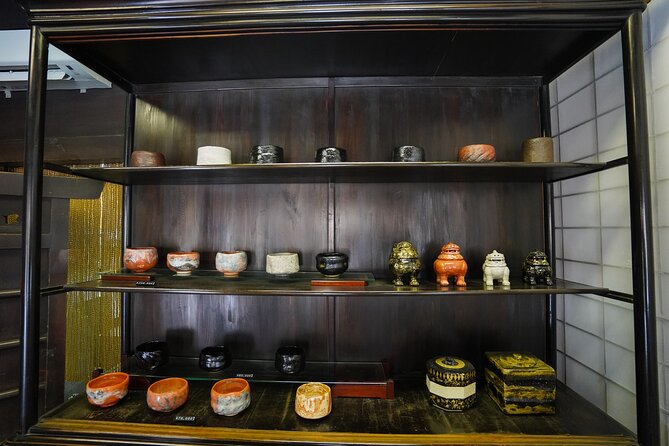
Before heading to the meeting point, travelers should be mindful of a few key preparation tips.
-
Dress comfortably in loose, breathable clothing suitable for a religious temple visit. Avoid revealing or overly casual attire.
-
Bring a small towel or handkerchief, as etiquette during a tea ceremony requires guests to handle cups and bowls delicately.
-
Ensure you have cash on hand for any additional purchases or tips during the tour.
-
Stay hydrated by packing a water bottle, as the tour occurs during the warm summer months.
Adhering to these simple preparations will help ensure a seamless and enjoyable Kyoto tea ceremony and walking experience.
Feedback and Ratings From Previous Participants
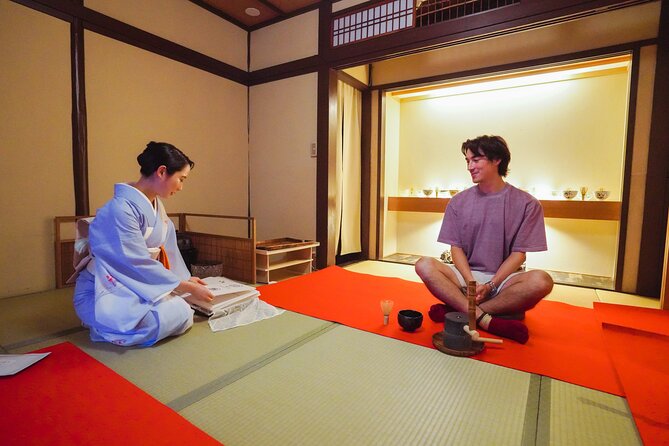
The tour has received excellent reviews from previous participants, with a perfect 5.0 rating based on 6 total reviews.
Customers have praised the engaging English-speaking guide, the insightful tea ceremony experience, and the opportunity to explore Gion’s wabi-sabi charm.
One reviewer described it as a "must-do" for anyone visiting Kyoto, while another said it was the "highlight of their trip."
The tour’s small group size, personalized attention, and convenient meeting and end points have also been well-received.
Frequently Asked Questions
Can I Take Photos During the Tea Ceremony?
Photos are allowed during the tea ceremony experience. The tour includes a photographer who will take photos of participants throughout the ceremony, providing them with memorable keepsakes of the traditional tea ritual.
Is There a Dress Code for the Tour?
The tour doesn’t have a strict dress code, but participants are encouraged to wear comfortable, modest clothing that’s suitable for walking. Avoid overly casual or revealing attire to respect the cultural experience.
How Much Walking Is Involved During the Gion Portion?
The Gion portion of the tour involves a moderate amount of walking, approximately 1-2 kilometers. Guests should expect to be on their feet for around an hour as they explore the historic Gion district.
Can I Request a Vegetarian/Vegan Tea Ceremony Option?
Yes, you can request a vegetarian or vegan tea ceremony option when booking this tour. The supplier is accommodating of dietary requirements and will provide a suitable tea ceremony experience tailored to your needs.
Is This Tour Suitable for Children?
The tour appears suitable for children, as it mentions that "Infants must sit on laps." However, it’s not recommended for travelers with back problems, so parents should consider their child’s needs before booking.
The Sum Up
This Kyoto tour offers a captivating glimpse into Japan’s rich cultural heritage. Participants can enjoy the elegant tea ceremony, explore Gion’s historic architecture, and visit iconic temples, all while gaining a deeper understanding of the wabi-sabi aesthetic. With an English-speaking guide to provide insights, this experience is a must-do for anyone seeking to connect with Kyoto’s spiritual and artistic traditions.
More Walking Tours in Kyoto
More Tours in Kyoto
- Kyoto Custom Private Car Tour With Local Guide
- Kyoto: Early Bird E-Bike Tour With Lunch
- Guided Kyoto City Cherry Blossom One Day Private Tour
- Private Kyoto Osaka Day Tour With English Speaking Driver
- Kyoto Private Customizable Tour With Guide & Luxury Vehicle
- Kyoto Tour 12 Hours Private Nagoya Pick up Available
More Tour Reviews in Kyoto
- The Art of Geisha: Exclusive Show & Traditional Japanese Game
- Tea Ceremony With Kimono and Professional Photoshoot in Kyoto
- Kyoto Arashiyama Bamboo Forest Hidden Hiking Tour
- Kyoto Early Morning Walking Tour: Nature & History
- Small-Group Dinner Experience in Kyoto With Maiko and Geisha
- Private Kyoto Night Tour: Historic Walk at Gion and Fushimi
Not for you? Here's more things to do in Kyoto we have recnetly reviewed
- 5 Best Cruises And Boat Tours In Kyoto
- 14 Best Dining Experiences In Kyoto
- 20 Best Full-Day Tours In Kyoto
- 5 Best 2 Day Tours In Kyoto
- 2 Best 4 Day Tours In Kyoto
- 20 Best Photography Experiences In Kyoto
- 13 Best Dinner Tours In Kyoto
- 25 Best Food Tours In Kyoto
- 14 Best Lunch Experiences In Kyoto
- Kyoto Bus Tour: Iconic KInkakuji, Ginkakuji, Kiyomizu Temple (AW)
- Kyoto Bus Tour: Arashiyama, Kinkaku-ji Review
- Gyoza Cooking Class in Kyoto: Traditional Japanese Dumplings
